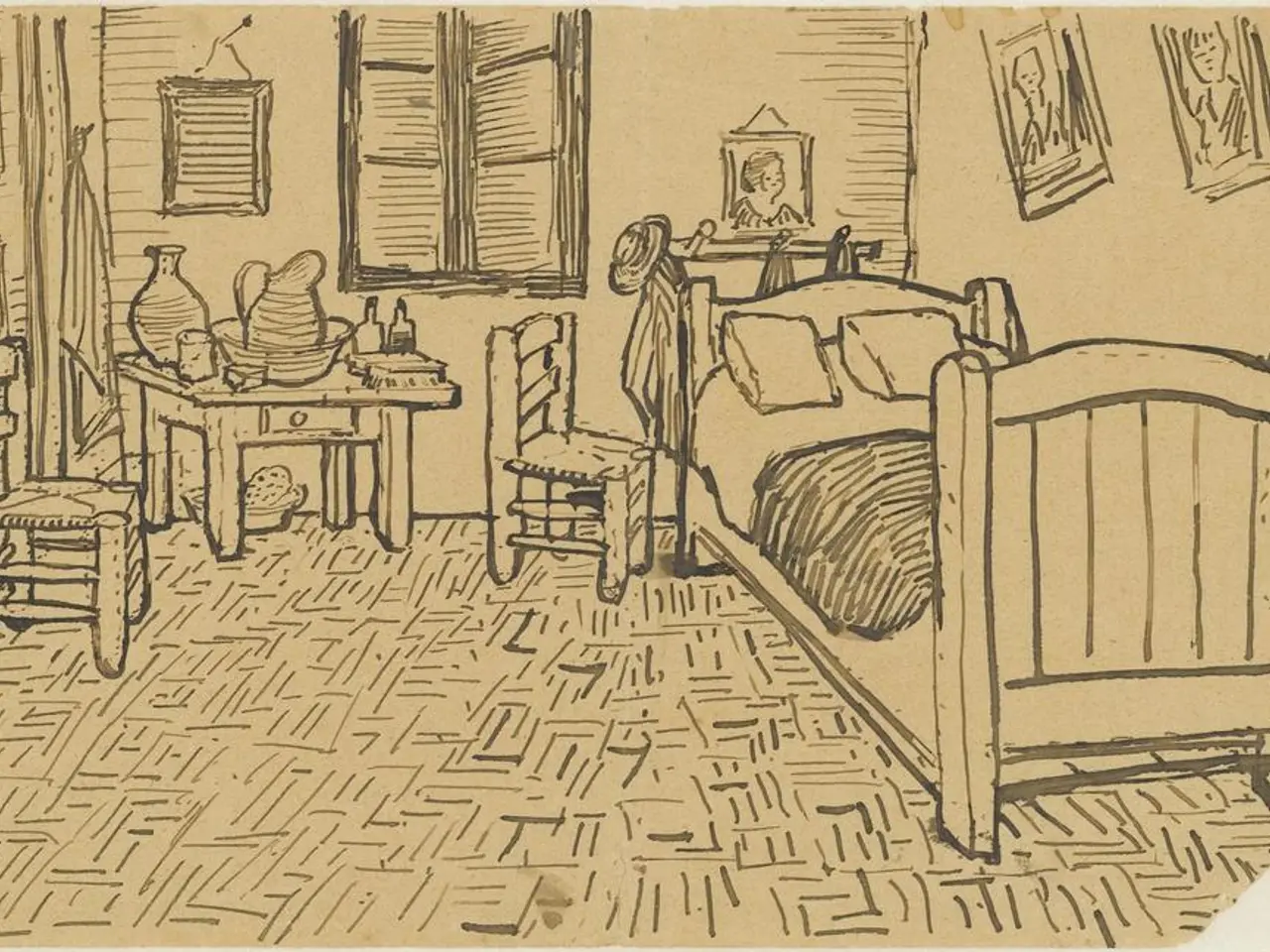Showcasing Art in a Relaxed Manner Equally Yields Stunning Results
In the world of interior design, leaning artwork has emerged as a popular trend, offering a relaxed and personal touch to home spaces. According to various design experts, this approach can transform a room without requiring significant effort.
Architect Georgina Wilson expresses a preference for spaces that continuously shift, change, and evolve. She advocates for a move away from structured gallery walls and towards looser, more individualized ways of showing art, emphasizing personality over perfect symmetry.
Creating a Balanced, Purposeful Arrangement
To intentionally lean art for a casual and personal home design, focus on creating a balanced, purposeful arrangement rather than something that looks unfinished or temporary. Key strategies include:
- Avoid placing a leaning piece alone in an obvious spot where art would typically hang, as this can look like it’s just waiting to be hung. Instead, surround it with complementary decor items to balance the visual weight and create a curated vignette.
- Choose larger or oversized pieces since leaning art tends to make more impact when it has substantial scale, helping it feel like an intentional design choice rather than a placeholder.
- Consider the relationship between the art and furniture or architectural elements around it—art should feel connected and integrated into the overall room composition. Even relaxed, leaning art should feel like it belongs in the space.
- Layer leaning pieces by positioning multiple artworks slightly overlapping or in a diagonal zigzag to add texture and interest without clutter.
- Incorporate other objects (like vases, books, or vintage collectibles) nearby to enhance the lived-in and personalized vibe.
This approach aligns with design principles emphasizing intention, balance, scale, and integration with surrounding elements to make leaning art a casual yet stylish statement in home decor. Using these methods helps the look appear effortlessly curated rather than accidental.
Bringing Art Down to Floor Level
Shifting art off the wall and bringing it down to floor level invites a different kind of interaction, as noted by Georgina. This change in position can make a space feel more intimate and inviting.
Shona McElroy, principal of Smac Studio, notes that leaning artwork brings a new dynamic to shelf styling, allowing for variety and interest in the space. This interior design trend looks best when opting for larger and oversized pieces of artwork, as they create a bold statement and add a touch of elegance to the space.
In conclusion, leaning artwork offers a unique and personal approach to home decor, allowing for a more relaxed and considered ambiance. By adopting these strategies, homeowners can create a space that reflects their style and personality while maintaining a sense of intention and balance.
[1] Source: Interior Design Magazine [4] Source: Architectural Digest
- Architect Georgina Wilson encourages a shift away from structured gallery walls towards looser, more individualized ways of displaying art for a personalized touch in home spaces.
- A balanced, purposeful arrangement is essential when intentionally leaning art for a casual home design, ensuring that the art doesn't look incomplete or temporary.
- To create a curated vignette, surround leaning pieces with complementary decor items and avoid placing them in incongruous spots.
- Larger or oversized leaning art pieces make a more significant impact and help the design appear intentional rather than casual.
- Incorporating other objects near leaning art enhances the lived-in and personalized vibe, while considering the relationship between art and furniture or architectural elements helps the art feel integrated into the room composition.
- Bringing art down to floor level can make a space feel more intimate and inviting, with larger and oversized pieces creating a bold statement and adding a touch of elegance to the space.




